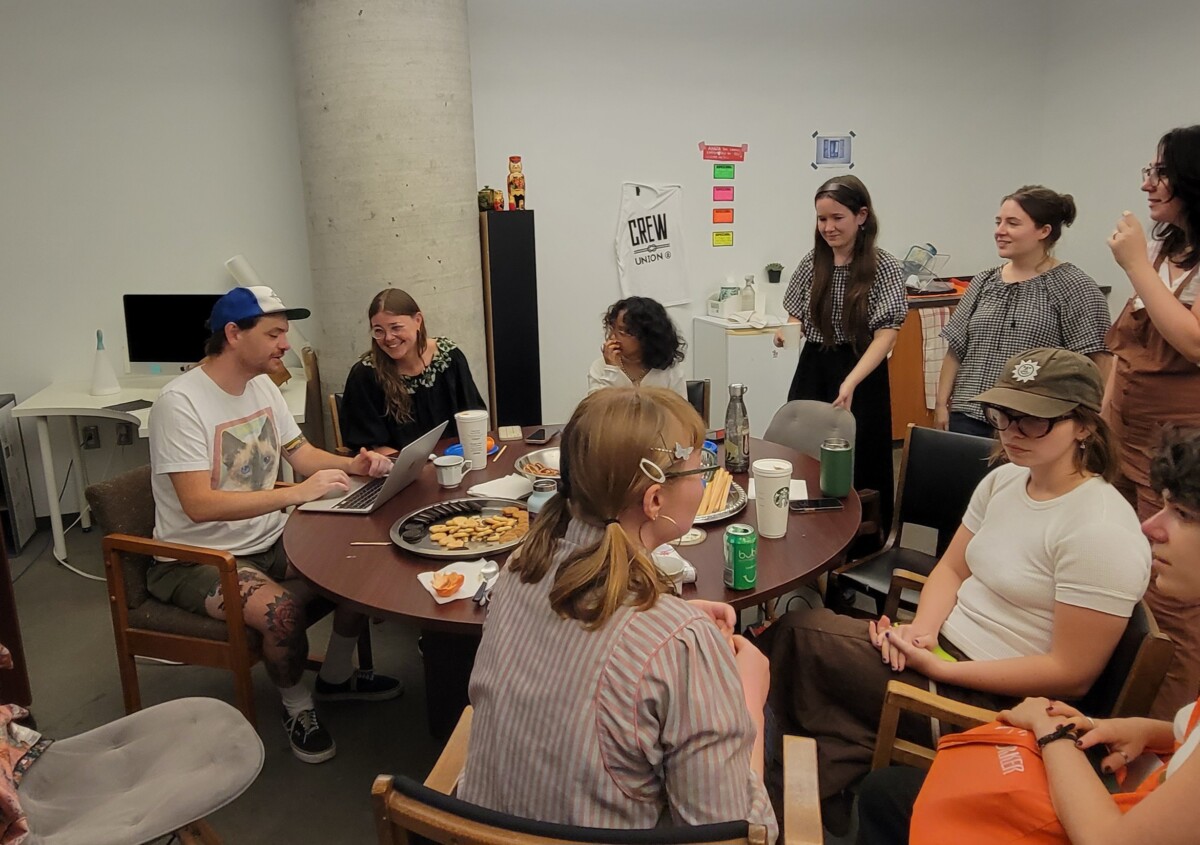Concordia’s Art History Graduate Student Association hosted their first meet-and-greet of the academic year.
Concordia University’s Art History Graduate Student Association (AHGSA) kicked off the school year with a casual meet-and-greet for incoming and returning graduate students in the art history program.
The Concordian spoke to AHGSA’s PhD representative Timmy Chandler about the executive team’s goals for this year. He emphasized their focus on fostering collegial relationships through activating social spaces and providing access for students to networking and career-building opportunities. “AHGSA acts as a liaison between art history graduate students and each other, the department/faculty/other art history student groups. There is a large scope of what projects and activities the team can propose and make happen,” said representative Margaret Lapp.
Building a sense of community on campus in a post-lockdown world has been an enduring challenge for many student associations. AHGSA’s purpose in the past has been to organize and facilitate their annual symposium for graduate students to present their academic work and gain professional experience.
Their latest symposium, Thrivance | Le Fleurissement, was held in April 2022. Current MA students have mixed feelings about the symposium’s hiatus during the 2022–2023 academic year due to several unfulfilled leadership positions, but this was also a reflection of AHGSA’s shifting priorities.
Chandler pointed out that this past year, the association’s funding was allocated toward smaller and more frequent social events like workshops and pop-ups, rather than one large, intimidating conference. This was an effort to make the association more accessible and approachable in order to encourage students to be more regularly involved and thus feel more connected to their peers.
This year, the team hopes to strike a balance and continue to host small, engaging social events while also bringing back the symposium. So far, it has been a successful endeavour for the association. The meet-and-greet bustled with anecdotal stories of long-term friendships and connections being born at AHGSA’s events, such as their BYOB Park Frolic picnic, their maxed out Frigo Vert Grad Mixer, and their interdepartmental networking event hosted in collaboration with MFASASA (the Master of Fine Arts Studio Arts Association).
AHGSA is always seeking new members and students can stay up to date with their programming by following their instagram page @ahgsaconcordia. Their profile also shares flyers for upcoming events around Montreal’s art scene within and beyond Concordia, making it a great resource for new and returning students to get involved. Be sure to check them out and stay tuned for the results of Monday’s general assembly and fall election!
